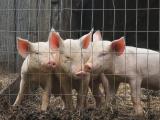Aug 6, 2010
WHO reports little change in flu levels
The World Health Organization (WHO) reports that the global pandemic H1N1 situation remained largely unchanged in the week that ended Aug 1, with transmission still most active in parts of South Asia and limited areas of tropical South and Central America. India continues to have the most notable activity, although the intensity and severity did not appear to exceed levels during the first 2009 wave. Southern Hemisphere areas with H1N1 flu activity include Chile, New Zealand, and Australia.
http://www.who.int/csr/don/2010_08_06/en/index.html
Aug 6 WHO update
Biochemical trick helps H1N1 virus spread in humans
A new study has identified an amino acid in pandemic H1N1 that allows its efficient replication in mammals. The acid, at position 591 of polymerase subunit PB2 (ie, PB2-591), apparently compensates for the virus's lack of the amino acid PB2-627K, thought to be critical for avian flu virus adaptation to mammals. The authors say this finding, plus another regarding an alteration in surface shape of the H1N1 PB2 protein, helps explain the spread of the virus in humans.
http://www.plospathogens.org/article/info%3Adoi%2F10.1371%2Fjournal.ppat.1001034
Aug PLoS Pathog article
H1N1 activity up in New Zealand
Influenza-like illnesses (ILIs) in New Zealand, now in its winter season, are showing a significant uptick, according to a news release from the country's ministry of health. Reports of ILIs are at their highest level for the year so far but remain well below the level at this time last year, just after the peak of the 2009 wave. Pandemic H1N1 is the predominant strain circulating, and some areas that were not affected severely last year are seeing higher rates of hospitalization.
http://www.moh.govt.nz/moh.nsf/indexmh/influenza-a-h1n1-update-198-050810
Aug 5 news release




















